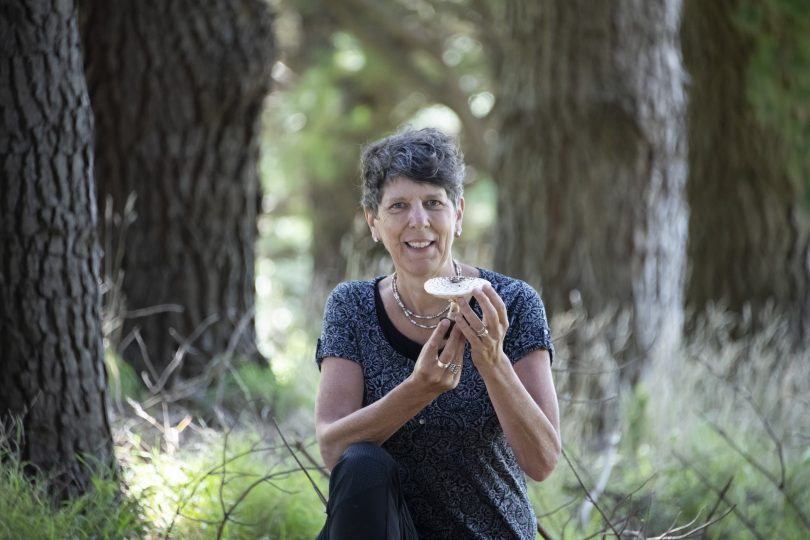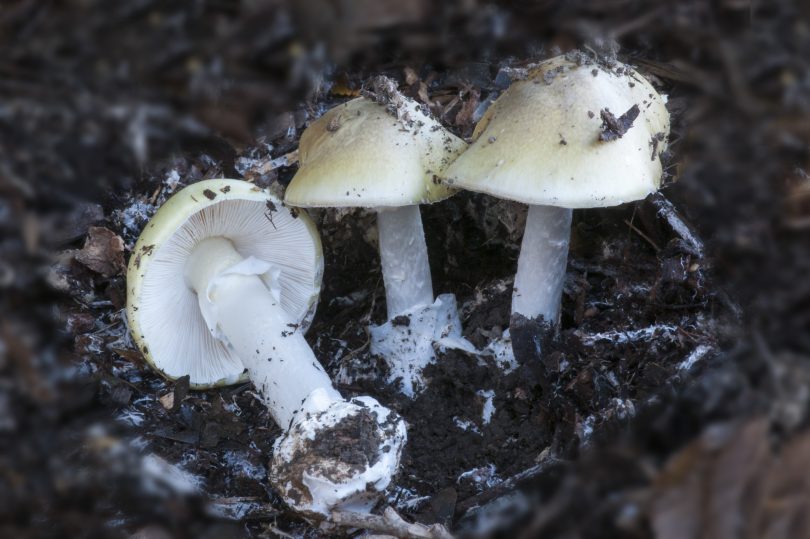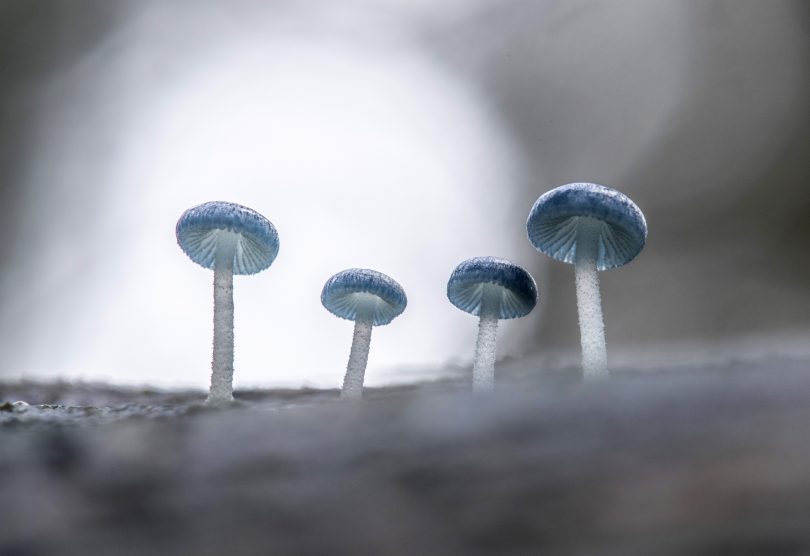
Environmentalist, photographer and lover of all things fungi, Alison Pouliot. Photo: Valerie Chetelat.
If you go down to the woods today you’re sure of a big surprise – especially if you eat something you shouldn’t.
Our bush is full of marvels but there are just as many dangers lurking about, so it’s best to listen to the experts: if you don’t know what it is, be it animal, vegetable or fungi, leave it alone.
Alison Pouliot is such an expert. The ecologist, environmental photographer and Honorary Fellow at the Australian National University, has worked in the field, literally, for more than two decades, mostly as a freelance conservationist but also connected to educational and environmental centres.
People usually don’t eat unrecognisable plants or animals when they wander into the bush, she says, so why would they try unknown fungi?
Alison’s passion for the natural world came first as a photographer. Through that craft she has managed to capture some remarkable images of the bush, particularly how everything is related to everything else.
She describes herself as a natural historian who uses words and images to evoke stories of the living world as well as the non-living.
When Alison started shooting pictures in the bush, it struck her early on “how little we know about fungi”.
“They are literally in a world of their own, such a different species to plants and animals,” she said. “Fungi are the third organism after plants and animals yet they seem to have slipped through the cracks – but they are connected to everything in our environment.”
Dozens of species of mammals rely on fungi for their food, like bettongs, wallabies and wallaroos, especially truffle fungi.
“To me, fungi is more than a word, it is the connecting scaffolding of the eco-system, more of a process than a thing,” Alison said.
“Like most things, there are good and bad fungi – although I say they’re all good, all have a purpose, but some do get a bad rap.

Toxic death cap mushrooms (Amanita phalloides) are usually found near oak trees. Photo: Alison Pouliot.
“Death cap mushrooms get the bad rap because they are so toxic but they have a purpose because they are very good for oak trees. They provide nutrition and water so they have an incredibly good ecological importance.
“But there is no antidote for them. So if you go foraging, you have to know what you’re looking for. It astonishes me that people go walking in the bush and eat things they don’t recognise.”
Alison has been talking fungi for more than two decades, holding workshops, conducting tours, explaining their importance. But she believes in the past few years there has been a groundswell of interest, not just from scientists and naturalists, but by everyone from bio-engineers to crime novelists.

Pixie’s parasol fungi boasts a remarkable organic structure. Photo: Alison Pouliot.
“There is a much broader spectrum of people these days who want to know about fungi,” she said. “I’ve had film-makers, fiction writers even fashion designers come to workshops.
“The designers, for example, are looking at the mycena interrupta (also known as pixie’s parasol) fungi because of its fibrous web and it’s also being looked at as a building material … there are so many new bio-tech applications for it.”
Alison will share her knowledge in two workshops at Canberra’s Mulligans Flat woodland sanctuary on 6 and 7 May. The full-day sessions will include an interactive program of fungi identification, advice on how to handle it, discussion about its ecological role as well as its cultural aspects like whether it is safely edible or toxic and its importance in biodiversity conservation.
Alison will take participants on a walk through the Mulligans sanctuary to look for fungi species of interest. Workshop participants are also invited to bring their own examples of fungi for Alison to identify.
More information is available from the Mulligans Flat website.
Original Article published by Sally Hopman on Riotact.




